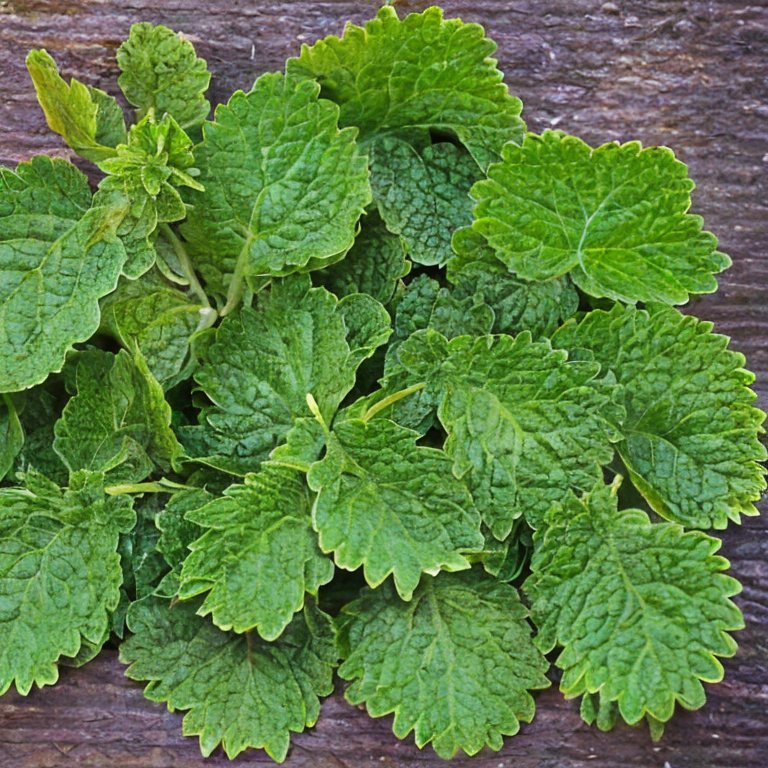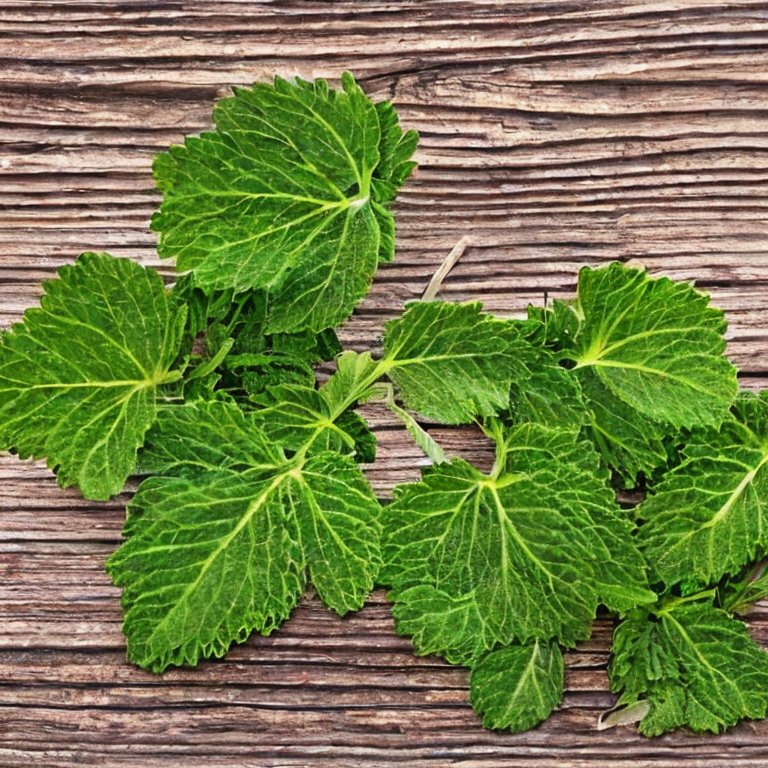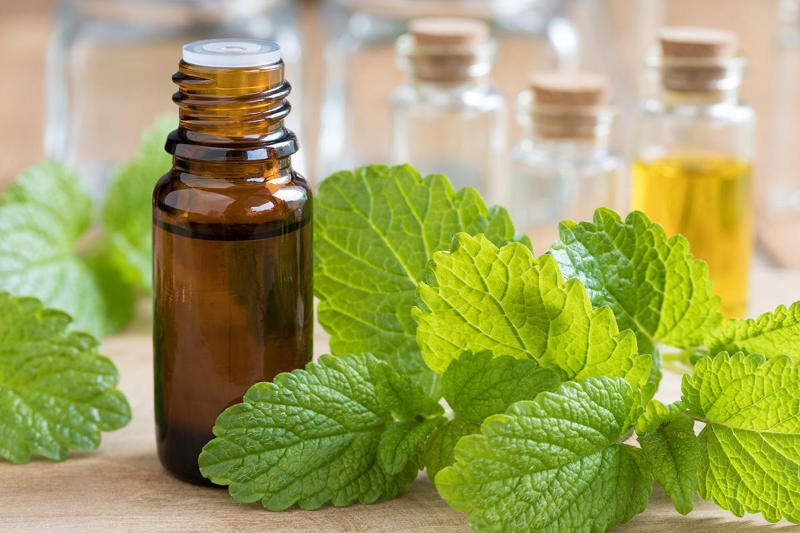
Are you ready to add a little zing to your garden? Look no further than the fabulous world of growing lemon balm! This versatile herb not only smells like a fresh batch of lemon cookies but also boasts a plethora of uses, from soothing teas to tantalizing culinary creations. So grab your gardening gloves, put on your herb-growing cap, and let’s dive into the delightful journey of cultivating your very own lemony oasis.
Find out about the health benefits of lemon balm in this article.
Find out about lemon balm essential oil in this article.
What is Lemon Balm?
Lemon balm, scientifically known as Melissa officinalis, is a perennial herb that belongs to the mint family, Lamiaceae. Originating from the Mediterranean region, this aromatic plant has long been cherished for its delightful lemony fragrance and a variety of practical applications. Lemon balm possesses a square stem, vibrant green leaves with gentle serrations, and small white or yellow flowers that bloom during the summer months.
This versatile herb is well-regarded for its culinary and medicinal uses. In the culinary realm, lemon balm adds a burst of fresh citrus flavor to an array of dishes and beverages. Its leaves can be used fresh or dried to infuse teas, create refreshing lemonades, enhance fruit salads, garnish desserts, and even season fish or poultry. The herb’s vibrant aroma and taste make it a favorite ingredient in many recipes, lending a bright and invigorating note to culinary creations.
Beyond its culinary charm, lemon balm possesses several medicinal properties that have been treasured for centuries. It is believed to have calming and soothing effects, making it a popular choice for herbal teas and natural remedies. Lemon balm tea is often used to promote relaxation, reduce stress, alleviate anxiety, and aid in restful sleep. Additionally, it has been used topically to soothe minor skin irritations, such as insect bites or sunburns.
Lemon balm is also celebrated for its potential health benefits. Research suggests that it may have antiviral properties, particularly against certain strains of the herpes simplex virus. This has led to the exploration of lemon balm extracts as a possible treatment for cold sores. Furthermore, the herb’s antioxidant compounds contribute to its potential as an immune system booster and supporter of overall well-being.
When it comes to growing lemon balm, it is a relatively low-maintenance herb that thrives in full sunlight or partial shade. It prefers well-drained soil and regular watering. Lemon balm can be propagated from seeds, cuttings, or divisions. With its vigorous growth habit, it is advisable to provide adequate space to prevent overcrowding. Regular pruning will help maintain a compact shape and encourage fresh growth.
To learn more about Lemon Balm you can read our article on Lemon Balm Health Benefits. Or read all about the benefits of the essential oil in this article. You can also purchase Melissa (Lemon Balm) essential oil here.

Growing Lemon Balm
Optimal Conditions for Growing Lemon Balm
To ensure successful growth and abundant harvests of lemon balm, it is crucial to provide optimal growing conditions for this delightful herb. Lemon balm thrives best when exposed to full sunlight or partial shade. While it can tolerate some shade, it generally benefits from at least six hours of direct sunlight each day. When selecting a location for planting, choose an area that receives ample sunlight to promote vigorous growth and maximize essential oil production.
In terms of soil, lemon balm prefers well-drained soil with a slightly acidic to neutral pH level ranging from 6.0 to 7.5. It is crucial to avoid waterlogged or compacted soil, as these conditions can hinder root development and lead to diseases. Before planting, it is advisable to amend the soil with organic matter, such as compost or well-rotted manure, to enhance its fertility, drainage, and overall quality.
Regular watering is essential for the healthy growth of lemon balm. While it can tolerate brief periods of drought, consistent moisture is important to maintain optimal health and prevent wilting. Water the plants deeply whenever the top inch of the soil feels dry. However, be cautious not to overwater, as excessive moisture can lead to root rot and other fungal diseases. To help retain soil moisture, apply a layer of mulch around the base of the plants.
Lemon balm benefits from occasional fertilization to support its growth and productivity. Before planting, incorporate a slow-release organic fertilizer into the soil according to the manufacturer’s instructions. Additionally, during the growing season, you can provide supplemental feedings with a balanced organic fertilizer every four to six weeks. This will provide the necessary nutrients for the herb to flourish.
In terms of spacing, it is important to give lemon balm enough room to grow without overcrowding. Each plant should be placed approximately 18 to 24 inches apart to allow for proper air circulation and prevent competition for nutrients. Adequate spacing also helps maintain the plant’s shape and facilitates easy access for harvesting and maintenance tasks.
Regular pruning is beneficial for lemon balm. It not only helps maintain its shape and appearance but also stimulates fresh growth. Pruning can be done throughout the growing season by trimming back the stems to encourage bushier growth. Additionally, remove any yellowing or damaged leaves to maintain plant health and appearance.
By providing optimal growing conditions, including adequate sunlight, well-drained soil, proper watering, appropriate spacing, and regular pruning, you can ensure that your lemon balm thrives and rewards you with abundant harvests of fragrant and flavorful leaves.
Propagation Methods
When it comes to propagating lemon balm, there are several methods to choose from, each offering its own advantages. One common propagation method is growing lemon balm from seeds. To start from seeds, sow them directly in the desired location or in seed trays indoors. Ensure the soil is moist and warm, as germination typically occurs within one to three weeks. Once the seedlings are large enough, they can be transplanted to their permanent location.
Another propagation method is stem cuttings. To propagate lemon balm from cuttings, select healthy stems that are approximately 4 to 6 inches long. Make a clean cut just below a node, removing any leaves from the lower part of the stem. Dip the cut end in a rooting hormone powder to enhance root development, then plant the cutting in a well-draining soil mix. Keep the soil consistently moist and provide adequate humidity to encourage root formation. After a few weeks, the cutting should develop roots and can be transplanted to its final growing location.
Dividing an existing lemon balm plant is yet another propagation technique. This method is particularly useful when rejuvenating overgrown plants or expanding your lemon balm collection. In early spring or fall, carefully dig up the plant and gently separate the root clumps into smaller sections. Ensure that each section has sufficient roots and foliage. Replant the divisions in prepared soil, water thoroughly, and provide appropriate care as the new plants establish themselves.
Regardless of the propagation method you choose, it is important to provide proper care and attention to the newly propagated lemon balm plants. Water them regularly, keeping the soil consistently moist but not waterlogged. Protect them from extreme temperatures and provide adequate sunlight or partial shade, depending on the preference of the herb. Once the plants have established roots and displayed healthy growth, you can continue to care for them as you would for mature lemon balm plants.
Pest and Disease Management
By implementing proper pest and disease management strategies, you can protect your lemon balm and ensure its continued growth and productivity.
One common pest that may attack lemon balm is aphids. These tiny insects feed on the plant’s sap, causing stunted growth and distorted leaves. To control aphids, you can use insecticidal soap or a strong blast of water to dislodge them from the plant. Ladybugs and lacewings are natural predators of aphids and can be introduced to your garden to help keep their population in check.
Another pest to watch out for is the spider mite. These minuscule arachnids can cause yellowing leaves and webbing on the plant. Regularly inspect the undersides of leaves and use a strong stream of water to remove them. Neem oil or insecticidal soap can also be effective in controlling spider mites.
Lemon balm is susceptible to fungal diseases, such as powdery mildew and root rot. Powdery mildew appears as a white, powdery coating on the leaves, while root rot causes wilting and decay of the roots. To prevent fungal diseases, provide proper air circulation by spacing plants adequately and avoiding overcrowding. Water the plants at the base to keep the leaves dry, as moisture promotes fungal growth. Applying a fungicide labeled for use on edible herbs can also help manage fungal diseases.
To minimize the risk of pests and diseases, maintain overall plant health by providing optimal growing conditions. This includes ensuring proper sunlight, well-drained soil, and appropriate watering practices. Regularly inspect your lemon balm for any signs of pests or diseases and promptly address any issues that arise. Removing any diseased or infested plant material can help prevent the spread of pests and diseases.
Additionally, practicing crop rotation and avoiding planting lemon balm in the same location year after year can help reduce the risk of recurring pests and diseases. By rotating the planting area, you disrupt the life cycles of pests and pathogens, making it harder for them to establish and thrive.
Overall, staying vigilant, providing optimal growing conditions, and taking prompt action against pests and diseases is key to maintaining a healthy lemon balm garden.

Conclusion
Growing lemon balm is a rewarding endeavor that brings the joy of vibrant fragrance, delightful flavor, and a multitude of uses. Whether you’re cultivating it for culinary purposes, herbal remedies, or simply to enjoy its beauty in the garden, lemon balm is a versatile herb that adds a touch of zest to your life. By providing optimal growing conditions, practicing proper care and maintenance, and staying vigilant against pests and diseases, you can cultivate healthy lemon balm plants that will thrive and provide you with an abundant harvest. So, put on your gardening gloves, embrace the lemony adventure, and savor the bountiful rewards of growing your own lemon balm oasis.
Be sure and check out all the informative articles on our Natural Living Blog.
FAQs:
Q: Will lemon balm come back every year?
A: Yes, lemon balm is a perennial herb, meaning it will come back year after year with proper care.
Q: Is lemon balm full sun or shade?
A: Lemon balm prefers full sun to partial shade. It thrives best when exposed to at least six hours of direct sunlight each day.
Q: Where is the best place to plant lemon balm?
A: The best place to plant lemon balm is in well-drained soil with a slightly acidic to neutral pH level. Choose a location that receives ample sunlight and has good air circulation.
Q: Does lemon balm spread easily?
A: Yes, lemon balm has a tendency to spread easily. Its vigorous growth habit allows it to send out runners and quickly populate an area. To control its spread, you can plant it in containers or regularly prune and divide the plant.
Q: What are the disadvantages of lemon balm?
A: While lemon balm has numerous benefits, it is important to note that it can be invasive if not properly contained. Its ability to spread quickly may require regular maintenance and monitoring. Additionally, some individuals may experience skin sensitivity to lemon balm, so it’s advised to test a small amount on the skin before using it topically.
Q: What is the lifespan of lemon balm?
A: Lemon balm has a lifespan of several years. With proper care, it can thrive for three to five years or even longer.
Q: How cold is too cold for lemon balm?
A: Lemon balm is hardy in USDA zones 4-9. It can tolerate mild frosts and cool temperatures, but prolonged exposure to freezing temperatures can damage or kill the plant. Providing protection, such as mulching, can help safeguard it during colder winter months.
Q: What to do with lemon balm at the end of the season?
A: At the end of the season, you can trim back the lemon balm to remove any dead or wilted foliage. If desired, you can also harvest the remaining leaves for culinary or medicinal use. Properly clean up the garden area and dispose of any plant material that may harbor pests or diseases.
Q: Should I freeze or dry lemon balm?
A: Lemon balm can be preserved by both freezing and drying methods. Freezing retains the herb’s fresh flavor, making it ideal for use in teas and culinary dishes. Drying lemon balm allows for long-term storage and is suitable for making herbal teas or infusions. Choose the preservation method that best suits your intended use.